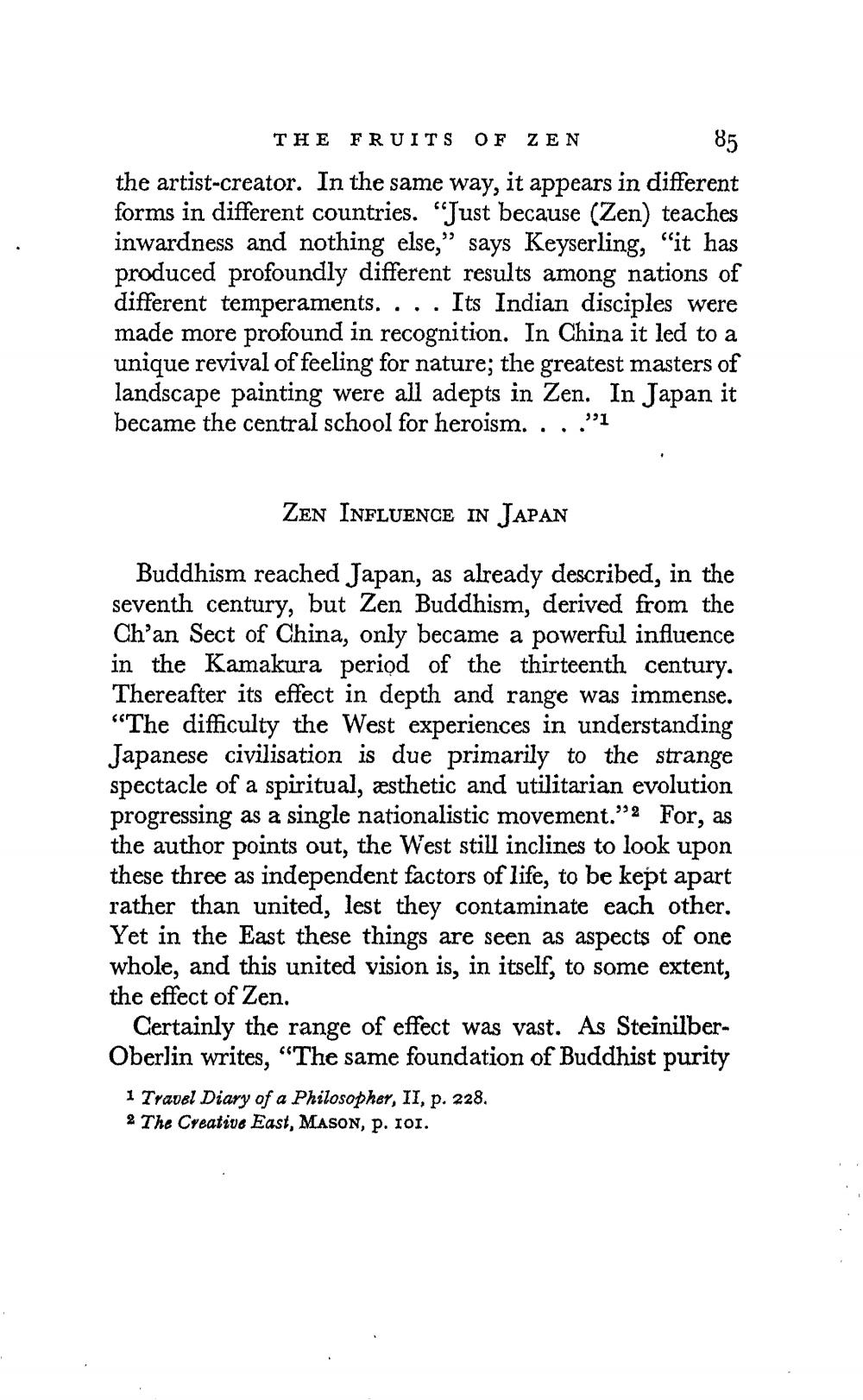________________
85
THE FRUITS OF ZEN the artist-creator. In the same way, it appears in different forms in different countries. "Just because (Zen) teaches inwardness and nothing else," says Keyserling, "it has produced profoundly different results among nations of different temperaments. . . . Its Indian disciples were made more profound in recognition. In China it led to a unique revival of feeling for nature; the greatest masters of landscape painting were all adepts in Zen. In Japan it became the central school for heroism. . . ."1
ZEN INFLUENCE IN JAPAN
Buddhism reached Japan, as already described, in the seventh century, but Zen Buddhism, derived from the Ch'an Sect of China, only became a powerful influence in the Kamakura period of the thirteenth century.
Thereafter its effect in depth and range was immense. “The difficulty the West experiences in understanding Japanese civilisation is due primarily to the strange spectacle of a spiritual, æsthetic and utilitarian evolution progressing as a single nationalistic movement."2 For, as the author points out, the West still inclines to look upon these three as independent factors of life, to be kept apart rather than united, lest they contaminate each other. Yet in the East these things are seen as aspects of one whole, and this united vision is, in itself, to some extent, the effect of Zen.
Certainly the range of effect was vast. As SteinilberOberlin writes, “The same foundation of Buddhist purity 1 Travel Diary of a Philosopher, II, p. 228. 2 The Creative East, MASON, P. IOI.




